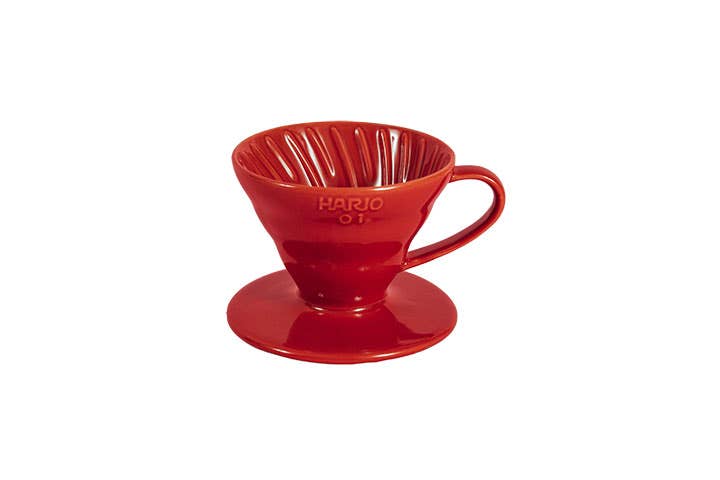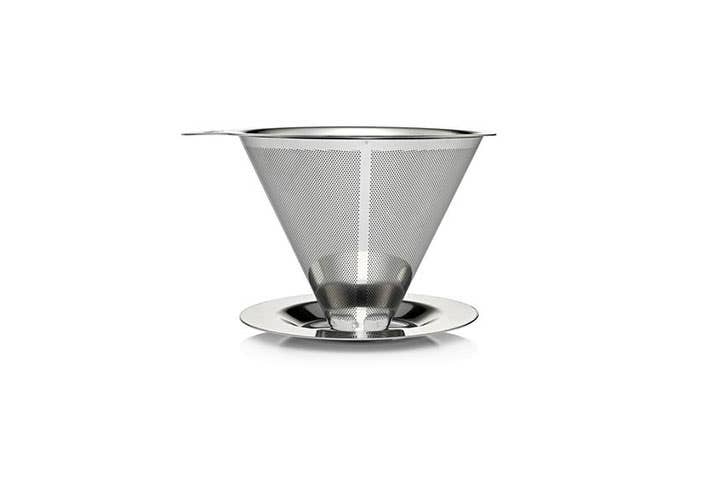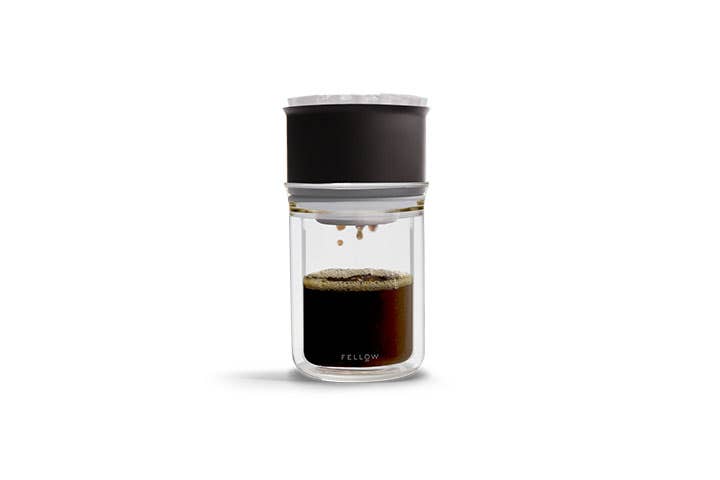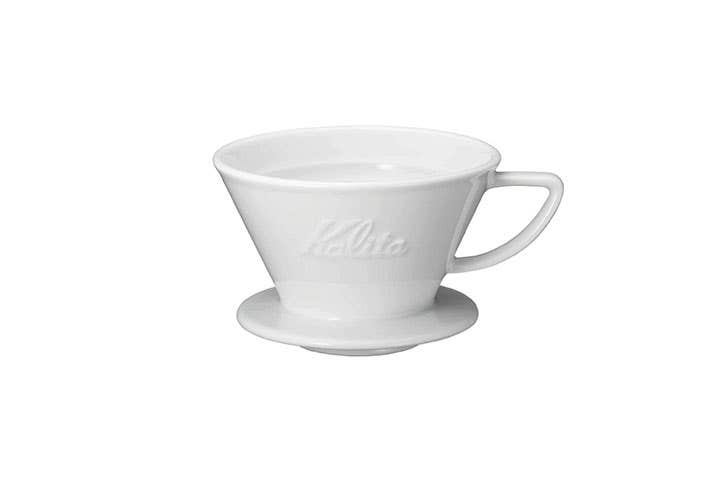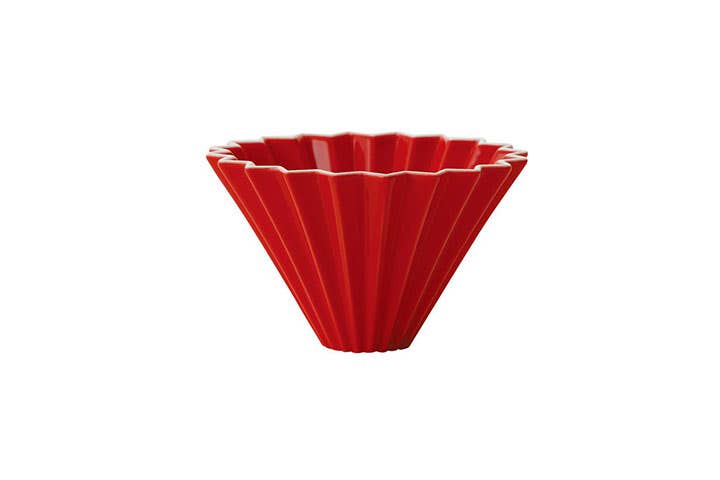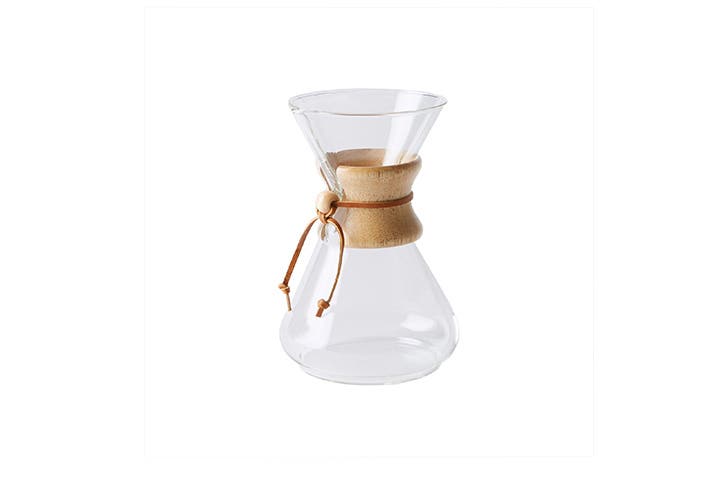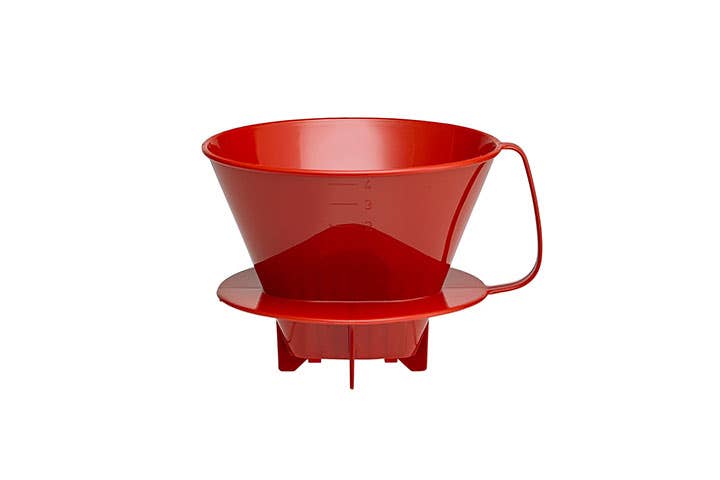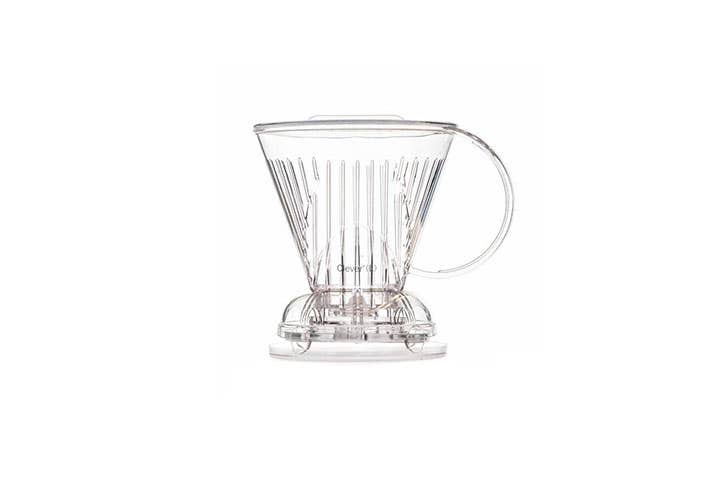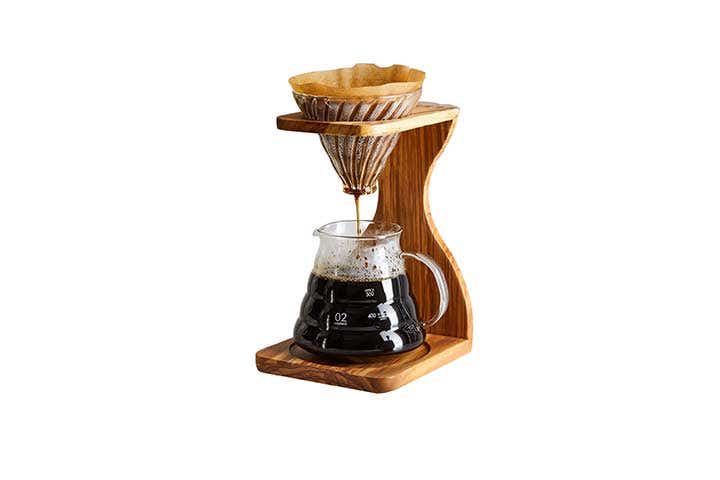Upgrade Your Coffee Routine with the Best Pour-Over Coffee Makers
Nine options that will have you pouring barista-level cups at home.
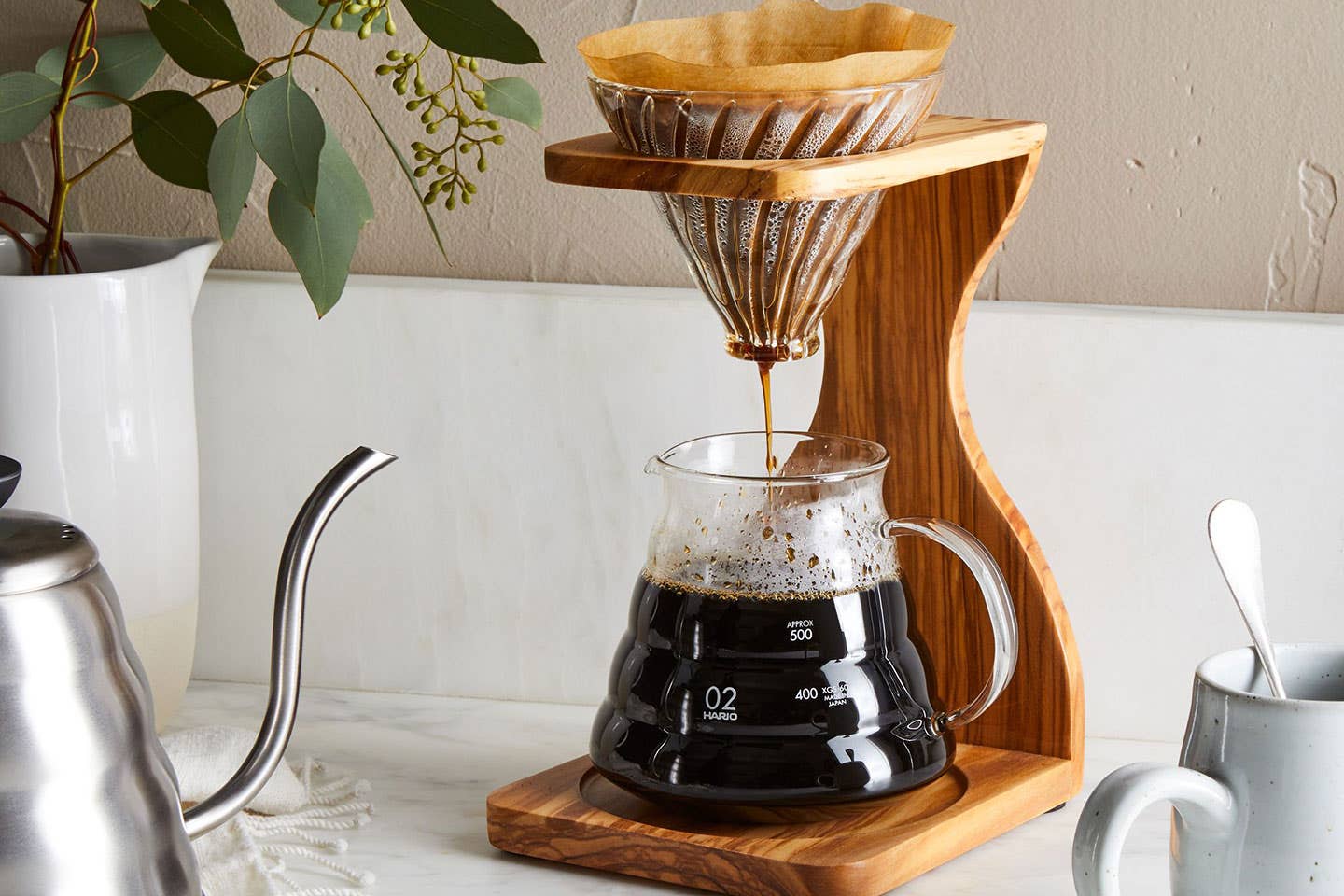
Specialty coffee continues to win over new devotees each year, but there’s been a laser focus on at-home brewing during the COVID-19 pandemic. The simplest approach truly is the manual pour-over method; once you realize how easy it is to make a morning cup in your jammies, it’s hard to go back. This technique involves pouring temperature-controlled water over precisely ground coffee beans. Both the water and grounds are measured to specific ratios, depending on the brewing style and the pour-over coffee maker, also called a dripper.
Choosing the best manual pour-over coffee maker for your home depends on several factors: your preferred roast level, your patience with measuring and timing, and how important design and aesthetics are to you. Do you enjoy fourth-wave, light-roasted, tea-like coffees whose delicacy is not very forgiving in the brewing department? Or do you prefer heavy-bodied, rich-toned coffees, maybe even with a splash of milk or a dairy alternative? For the former, a longer brew time is essential, as these flavor compounds are extracted more slowly. For the latter, a faster flow rate is ideal for reducing bitterness.
Whatever your coffee preference, you’ll need a few devices: a temperature-controlled gooseneck kettle, a small scale, a good grinder (preferably burr), and a timer (your phone is fine). With these tools secured, it’s time to pick a pour-over dripper. The most important specs to consider are ease of use, level of control over extraction, preferred style of brew, and the figure it cuts on your counter or shelf.
Our Top Picks
- Best Overall: Hario v60
- Best Value: JavaPresse
- Best Design-Driven: Fellow Stagg
- Best For Ease of Use: Kalita Wave
- Best Combination of Form & Function: Origami Dripper
- Best Splurge: Chemex
- Best For Camping: Melitta HIC
- Best Time-Saver: Clever Dripper
- Best High-Volume: Original Hario v60 with stand
Best Overall: Hario v60
Dimensions: various | Volume/Size: multiple | Filter: yes BPA-Free: yes Material: glass Shape: conical
Best Overall
Why we chose it: The Japanese-made Hario v60 is an attractive, affordable, tried-and-true option that offers complete control over extraction.
One of the earliest drippers in the pour-over landscape, the Hario v60 allows the most creative control over extraction, an important feature for brewing a variety of coffees with different grind sizes. Many drippers have multiple holes in the bottom, or a very narrow opening, both of which tend to restrict flow and can often “choke,” or clog. The v60’s single hole at the bottom allows you to pour fast or slow, depending on your grind size, with equal success.
The required proprietary filters are just the right thickness for keeping sediment out of your cup while allowing all the chemical compounds that ensure sensory complexity to flow through. Hario was founded more than 100 years ago as a manufacturer of heat-proof glass, and it now makes all manner of high-quality coffee equipment for home and commercial use. The Hario v60 comes in multiple sizes and materials; we recommend the glass version in your choice of size.
Pros
- Conical shape allows for layering of ground coffee
- No flow restriction, so you can pour at your preferred rate
- Makes clear coffee with no sediment
- Inexpensive
Cons
- Base of lighter-colored models stains over time
- Requires special filters
Best Value: JavaPresse
Dimensions: 5.12 by 5.08 by 3.82 inches | Volume/Size: n/a | Filter: no BPA-Free: yes Material: stainless steel Shape: conical
Best Value
Why we chose it: The under-the-radar JavaPresse is an excellent choice for affordability, and its one-piece construction doesn’t require a filter.
If you’re looking for an inexpensive workhorse and don’t need precise control over your brew, consider the JavaPresse. This dripper offers decent functionality with a double-walled 28-micron stainless-steel cone, and it brews one or two cups with equal ease. Because there is no filter, some sediment invariably gets in your cup, but this is also common with French press methods of brewing, so it won’t bother many coffee drinkers. This dripper is better for medium- or darker-roasted coffees because extraction tends to be on the faster side; play around with grind size and/or water temperature for greater precision.
Pros
- Durable one-piece construction
- Inexpensive
- Doesn’t require filter
Cons
- Doesn’t allow a great degree of control over extraction
- Some sediment gets through
Best Design-Driven: Fellow Stagg
Dimensions: various | Volume/Size: multiple | Filter: yes BPA-Free: yes Material: stainless steel Shape: cylindrical
Best Design-Driven
Why we chose it: Fellow Stagg’s minimalist matte black aesthetic and matching temperature-controlled gooseneck kettle make it a shoo-in for the beauty award.
Fellow is a relatively new company in the specialty coffee scene, but it broke ground right out of the gate with its gorgeous gooseneck kettle that looks like it could have been designed by Frank Lloyd Wright. Their Stagg dripper, which comes in two sizes, is made of tough but elegant stainless steel in matte-black and uses pretty accordion filters. It has steep sidewalls and little holes, both of which lend themselves to a relatively slow brew time, making the device perfect for preparing lighter-roasted coffees—and for impressing visitors with your design dexterity.
Pros
- Attractive, minimalist
- Great for brewing light-roasted coffees
- Has matching kettle option
Cons
- Difficult to speed up brew time
- On the expensive side
- Requires proprietary filters
Best For Ease of Use: Kalita Wave
Dimensions: various | Volume/Size: multiple | Filter: yes BPA-Free: yes Material: various Shape: flat-bottom cone
Best For Ease of Use
Why we chose it: The Kalita Wave is designed to be forgiving for novice brewers with a design that inherently controls flow rate.
The Kalita Wave is perhaps the Hario v60’s biggest competition among drinkers of third- and fourth-wave coffee styles—and it’s designed in an opposite manner. The Wave dripper has a flat bottom with three holes and wavelike horizontal ridges up the sides, the theory being that the slower flow rate this ensures will result in a complex cup. And it does. It also results in a slightly more concentrated cup because the coffee “steeps” a bit as it waits to drip through. If you’re a hardcore light-roast drinker, this may be the perfect choice for you.
Pros
- Easy to use
- Best for light-roasted coffees
- A good choice if you prefer a stronger cup
Cons
- Offers less-than-average control over flow rate
- Can result in bitterness with darker-roasted coffees
Best Combination of Form & Function: Origami Dripper
Dimensions: various | Volume/Size: multiple | Filter: yes BPA-Free: yes Material: porcelain Shape: accordion
Best Combination of Form & Function
Why we chose it: The Origami dripper has a colorful but meditative functional flourish that’s equal parts art installation and instrument of technical precision.
The timeless design of the Origami Dripper, which seems at home in any era or style of kitchen, is available in a wide range of colors, and its evocation of the Japanese art of origami has both aesthetic and technical impulses. The 20 accordion folds, which the brand unceremoniously calls “gutters,” serve to create air channels that prevent choking/clogging. But the most compelling feature of this dripper is that you can use flat-bottom Kalita Wave-style filters or conical Hario v60 filters, a choice that results in vastly different cups. It takes a bit of practice to zero in on the correct brew time that considers the variables of roast level and grind size, but once you do, this is a very versatile tool.
Pros
- Designed for even extraction with its accordion-style “gutters”
- Lots of wonderful color choices
- Flexible filter options
Cons
- Heat retention isn’t optimal
- Requires some skill and practice to dial in
Best Splurge: Chemex
Dimensions: multiple | Volume/Size: various | Filter: yes BPA-Free: yes Material: glass, wood, leather Shape: decanter-like
Best Splurge
Why we chose it: The Chemex is a contemporary classic manual brewer that is both dripper and server in one. It’s pricey but worth it if you’re after functional elegance.
The Chemex and its requisite double-bonded paper filter combo is a different manual-brewing animal in that it’s a closed system that you either love or hate. We love it for its clear, expressive cup and its aesthetically pleasing ritual aspects. The filters keep out more of the coffee’s oils, so the body can be a bit thinner compared with the same coffee brewed with a Hario v60 or Kalita Wave, but it’s a nice effect if you prefer a tea-like mouthfeel.
Pros
- Aesthetically pleasing in its wine-decanter evocations
- Great for serving, as well as brewing
- High-volume models are available
Cons
- Requires proprietary filters
- Non-pre-folded filters can be confusing to fold
Best For Camping: Melitta HIC
Dimensions: 5 inches by 4.5 inches by 4 inches | Volume/Size: 1 cup | Filter: yes BPA-Free: yes Material: plastic Shape: conical
Best For Camping
Why we chose it: The BPA-free plastic Melitta HIC dripper is ultra-lightweight, very inexpensive, and uses regular cone filters available at most any grocery store.
While all the drippers on this list are fairly portable, except for the Chemex, you’ll want something even lighter-weight (and virtually impossible to break) for camping. Enter the Melitta HIC, a dripper about as simple as they come. It can be stashed anywhere and is made of durable BPA-free plastic. It doesn’t make the most nuanced cup of coffee in the world, but it’s a sight for sore eyes at sunrise when you emerge from your tent into the chilly air.
Pros
- Exceptional value, lightweight, durable
- Cut-out in base that allows you to see inside cup
- Uses widely available filters
Cons
- Bulky design
- Offers little flow control
Best Time-Saver: Clever Dripper
Dimensions: multiple | Volume/Size: various | Filter: yes BPA-Free: yes Material: plastic Shape: conical
Best Time-Saver
Why we chose it: While technically not a pour-over device, the Clever Dripper functions as a one-pour wonder by way of a simple stopper mechanism that holds, then releases the brewed coffee into your cup. It requires no tending during brewing.
The Clever Dripper is actually an immersion brewer (e.g., a French press), but it is used like a pour-over dripper. After wetting the grounds with water at your temperature of choice, allowing the grounds to “bloom:” just pour the remainder of the desired amount of water all at once (no gooseneck kettle required) onto the ground coffee, set a timer for your target brewing time, and go about your business until it’s time to open the stopper and allow the coffee to flow into your cup. This device is best for darker roasts with less nuanced flavors in the fruity range, and the cup it produces is more like that of a French press than any other device on this list. You can even stop and start the flow if you’re making two cups.
Pros
- Can make two cups in one batch using stopper
- Uses commonly available filters
- Inexpensive
- Doesn’t need to be tended
Cons
- Flimsy plastic construction
- Not as effective for lighter-roasted coffee
Best High-Volume: Original Hario v60 with stand
Dimensions: various | Volume/Size: 6 cups | Filter: yes BPA-Free: yes Material: glass, wood, silicone Shape: conical
Best High Volume
Why we chose it: The Hario v60 with stand offers everything the classic v60 does, and it allows you to brew a pour-over at greater volume, up to six cups of coffee.
The Hario v60 with stand is an easy and visually appealing way to upsize your pour-over brew. It is simply a large version of the Hario v60 (listed above as Best Overall) that fits into a wooden stand; underneath is a double-walled glass serving pitcher with a silicone top (for further heat retention).
Pros
- Brews larger batches of coffee with one pour-over brew
- Attractive on the counter and a good conversation piece
Cons
- Requires proprietary filters
How We Chose These Products
Each dripper was put through its paces by following the manufacturers’ instructions for optimal performance. The tester and author, Kim Westerman, is a Licensed Q-grader and has been a coffee sensory analyst for seven years. The most important considerations in determining what products to recommend were ease of use, level of control over extraction and its relationship to the buyer’s preferred style of brew, and the device’s aesthetic presentation.
Features to Keep in Mind When Shopping for a manual pour-over coffee dripper
Preferred Roast Level: The single most important factor in determining the best manual pour over dripper for you is the style of coffee you prefer. If you always brew lighter-roasted coffees, then the Fellow Stagg or Kalita Wave will be your top contenders. If you prefer darker-roasted coffees, the Clever Dripper or the JavaPresse might give you more pleasing results. The Hario v60 and Origami are the most flexible in terms of controlling extraction, so if you like to mix it up, then one of these might be right for you.
Material Construction: Durability is always important, but sometimes it’s worth trading off for lighter weight and/or affordability. All the products recommended here are reasonably durable, but the Clever Dripper is the least so, given its lightweight plastic construction. The Melitta HIC, which is a great choice for camping, is practically indestructible, but it’s made of unattractive plastic.
Aesthetics & Design: The coffee-obsessed tend to have more than one brewing method at their fingertips. One might pull out the Chemex or the Hario v60 with stand for an upscale brunch or the pretty Origami or minimalist Fellow Stagg for a first date. And again, the device’s look and feel might be less important than efficiency, in which case the Clever Dripper might be just the ticket.
Ask the Experts
Q: Why is pour-over better (or different) than an automatic coffee maker?
The pour-over method offers the greatest control over your brew, as it puts the variables of water temperature, flow rate, and overall brew time in your hands. Done well, this can result in a cup that tastes as complex and multi-layered as the coffee’s potential offers.
Q: Is pour-over coffee less acidic?
Contrary to popular belief, the perception of acidity (which is different from actual levels of acidity) is wide-ranging with the pour over method, as there are many variables to be controlled for. That said, if you’re looking for a coffee with low perceived acid, you can achieve that by your choice of roast level, first and foremost, and then adjusting your grind and flow rate.
Q: How do I keep my pour-over warm?
The best way to keep your pour-over warm is to brew directly into a thermal-walled cup or pitcher. But many people find that coffee offers new aromas and flavors as it cools, much like how wine evolves as it is exposed to oxygen.
Q: How long does a pour-over coffee maker last on average?
Many pour-over drippers can easily last a lifetime, and beyond, depending on construction and care.
Q: What kind of coffee should I use for pour-over coffee?
Absolutely any coffee is a candidate for the pour-over method. Lighter roasts tend to shine in this format, while darker roasts do well if you control for the variables of grind size, temperature, and flow rate.
Our Take
There’s a vast range of options on the market for manual pour-over coffee makers, from user-friendly to design-forward. We feel the Hario v60 is the best choice overall for its control over extraction, its aesthetic appeal, and its value, though our other picks are great options depending on each user’s lifestyle and coffee preferences.
Keep Reading
Continue to Next Story
